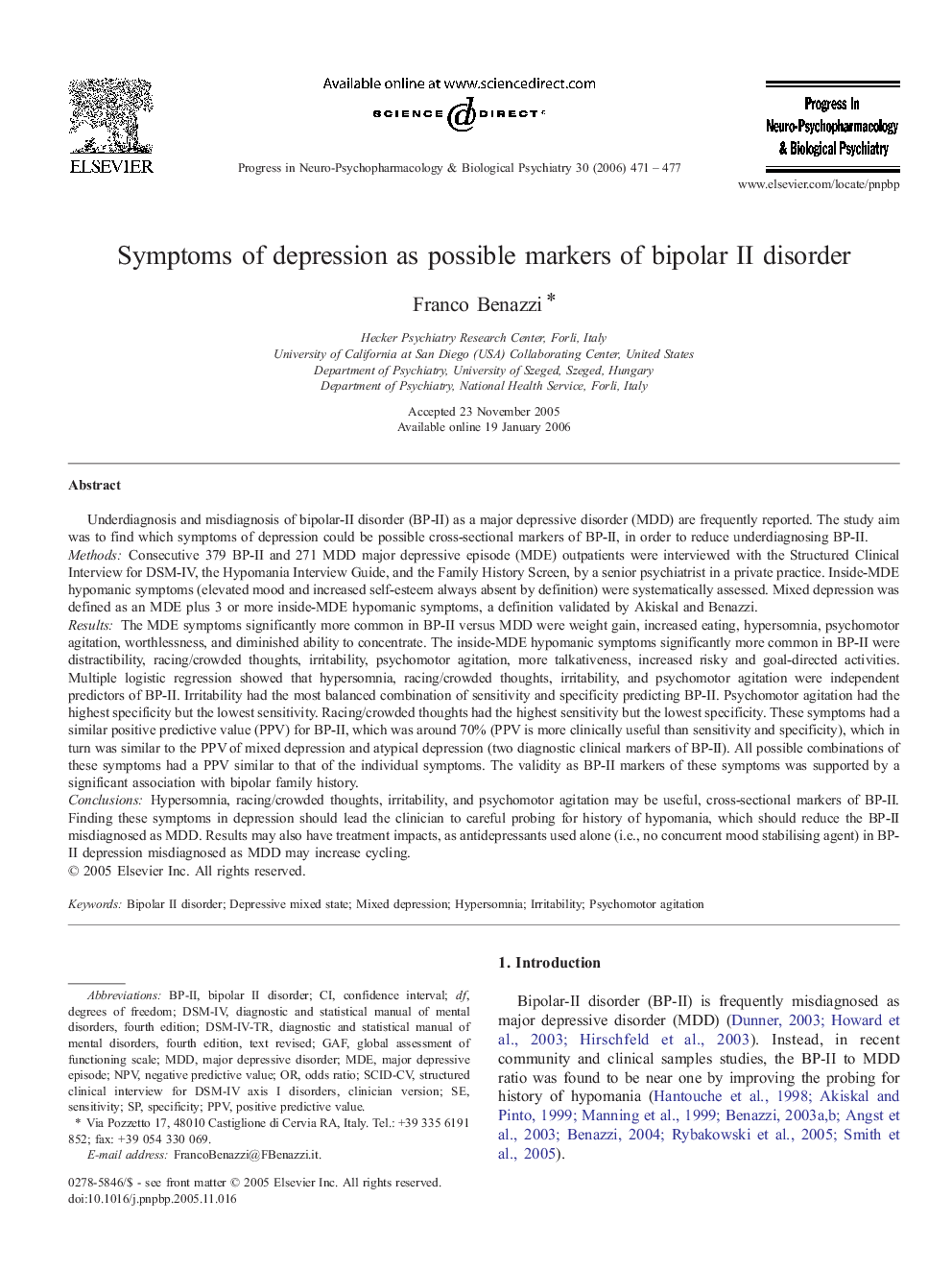| کد مقاله | کد نشریه | سال انتشار | مقاله انگلیسی | نسخه تمام متن |
|---|---|---|---|---|
| 2566837 | 1128099 | 2006 | 7 صفحه PDF | دانلود رایگان |

Underdiagnosis and misdiagnosis of bipolar-II disorder (BP-II) as a major depressive disorder (MDD) are frequently reported. The study aim was to find which symptoms of depression could be possible cross-sectional markers of BP-II, in order to reduce underdiagnosing BP-II.MethodsConsecutive 379 BP-II and 271 MDD major depressive episode (MDE) outpatients were interviewed with the Structured Clinical Interview for DSM-IV, the Hypomania Interview Guide, and the Family History Screen, by a senior psychiatrist in a private practice. Inside-MDE hypomanic symptoms (elevated mood and increased self-esteem always absent by definition) were systematically assessed. Mixed depression was defined as an MDE plus 3 or more inside-MDE hypomanic symptoms, a definition validated by Akiskal and Benazzi.ResultsThe MDE symptoms significantly more common in BP-II versus MDD were weight gain, increased eating, hypersomnia, psychomotor agitation, worthlessness, and diminished ability to concentrate. The inside-MDE hypomanic symptoms significantly more common in BP-II were distractibility, racing/crowded thoughts, irritability, psychomotor agitation, more talkativeness, increased risky and goal-directed activities. Multiple logistic regression showed that hypersomnia, racing/crowded thoughts, irritability, and psychomotor agitation were independent predictors of BP-II. Irritability had the most balanced combination of sensitivity and specificity predicting BP-II. Psychomotor agitation had the highest specificity but the lowest sensitivity. Racing/crowded thoughts had the highest sensitivity but the lowest specificity. These symptoms had a similar positive predictive value (PPV) for BP-II, which was around 70% (PPV is more clinically useful than sensitivity and specificity), which in turn was similar to the PPV of mixed depression and atypical depression (two diagnostic clinical markers of BP-II). All possible combinations of these symptoms had a PPV similar to that of the individual symptoms. The validity as BP-II markers of these symptoms was supported by a significant association with bipolar family history.ConclusionsHypersomnia, racing/crowded thoughts, irritability, and psychomotor agitation may be useful, cross-sectional markers of BP-II. Finding these symptoms in depression should lead the clinician to careful probing for history of hypomania, which should reduce the BP-II misdiagnosed as MDD. Results may also have treatment impacts, as antidepressants used alone (i.e., no concurrent mood stabilising agent) in BP-II depression misdiagnosed as MDD may increase cycling.
Journal: Progress in Neuro-Psychopharmacology and Biological Psychiatry - Volume 30, Issue 3, May 2006, Pages 471–477